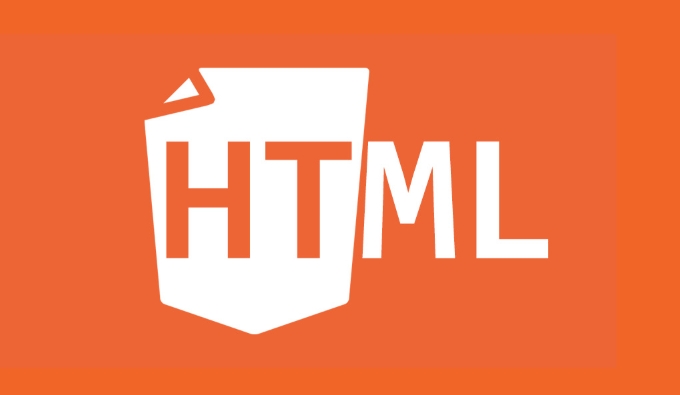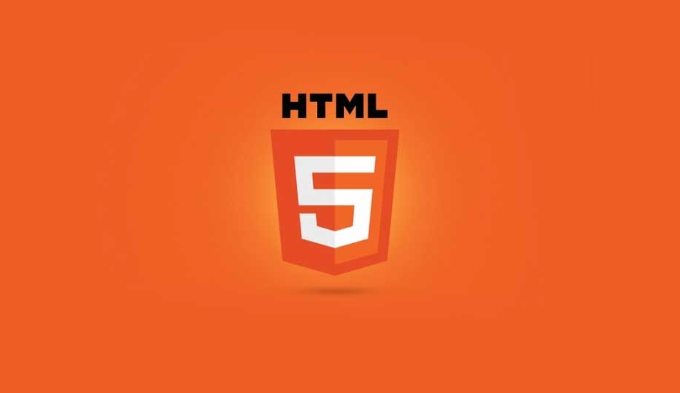 Web Front-end
Web Front-end
 HTML Tutorial
HTML Tutorial
 What is the loading='lazy' one of the html attributes and how does it improve page performance?
What is the loading='lazy' one of the html attributes and how does it improve page performance?
What is the loading='lazy' one of the html attributes and how does it improve page performance?
Jul 01, 2025 am 01:33 AMloading="lazy" is an HTML attribute for  and
and

loading="lazy" is an HTML attribute you can add to <img src="/static/imghw/default1.png" data-src="https://img.php.cn/upload/article/000/000/000/175130480555833.jpeg" class="lazy" alt="What is the loading='lazy' one of the html attributes and how does it improve page performance?" > and <iframe></iframe> elements to enable native lazy loading in the browser. This means the resource won't load immediately when the page loads — instead, it waits until the user scrolls near it. It's a simple but effective way to improve performance without needing extra JavaScript.

How Lazy Loading Helps Performance
The main benefit of loading="lazy" is reducing initial page load time. When images or iframes are far below the fold (the part of the page visible without scrolling), loading them upfront just slows things down unnecessarily. By deferring their loading until they're needed, browsers save bandwidth and processing power.

- Less data usage for users, especially on mobile
- Faster initial load , which helps with perceived performance
- Lower server requests during page load
This works best on long pages with many images or embedded content.
Supported Elements: img and iframe
Right now, loading="lazy" applies directly to two elements:

<img src="/static/imghw/default1.png" data-src="photo.jpg" class="lazy" loading="lazy" alt="A nice landscape"> <iframe src="embed.html" loading="lazy"></iframe>
It doesn't work on other elements like <video></video> or custom components unless you handle lazy loading manually or via a script. Also, keep in mind that not all browsers support it fully, though most modern ones do.
When Not to Use loading="lazy"
There are some cases where you should avoid using this attribute:
- For images above the fold — delaying them might hurt performance or cause visual shifts
- For small icons or UI elements — the savings aren't worth the risk of a broken fallback
- If you already use a JavaScript-based lazy loading library — mixing both could cause conflicts
Also, don't assume everything will “just work.” Always test how your page behaves as users scroll, especially on slower networks.
A Few Gotchas to Keep in Mind
One thing people often overlook is that loading="lazy" isn't a magic bullet. You still need to follow good image practices like optimizing file size and setting dimensions. Otherwise, even with lazy loading, images may shift layout when they finally load.
Another point: if a browser doesn't support loading="lazy" , it just ignores it and loads the image normally. That's fine, but you might want to combine it with a polyfill or JS-based solution if you need broader control.
And remember, even though it's easy to use, always think about the user experience. Don't overdo it — some images are better off loading right away.
Basically that's it.
The above is the detailed content of What is the loading='lazy' one of the html attributes and how does it improve page performance?. For more information, please follow other related articles on the PHP Chinese website!

Hot AI Tools

Undress AI Tool
Undress images for free

Undresser.AI Undress
AI-powered app for creating realistic nude photos

AI Clothes Remover
Online AI tool for removing clothes from photos.

Clothoff.io
AI clothes remover

Video Face Swap
Swap faces in any video effortlessly with our completely free AI face swap tool!

Hot Article

Hot Tools

Notepad++7.3.1
Easy-to-use and free code editor

SublimeText3 Chinese version
Chinese version, very easy to use

Zend Studio 13.0.1
Powerful PHP integrated development environment

Dreamweaver CS6
Visual web development tools

SublimeText3 Mac version
God-level code editing software (SublimeText3)

Hot Topics
 How do I stay up-to-date with the latest HTML standards and best practices?
Jun 20, 2025 am 08:33 AM
How do I stay up-to-date with the latest HTML standards and best practices?
Jun 20, 2025 am 08:33 AM
The key to keep up with HTML standards and best practices is to do it intentionally rather than follow it blindly. First, follow the summary or update logs of official sources such as WHATWG and W3C, understand new tags (such as) and attributes, and use them as references to solve difficult problems; second, subscribe to trusted web development newsletters and blogs, spend 10-15 minutes a week to browse updates, focus on actual use cases rather than just collecting articles; second, use developer tools and linters such as HTMLHint to optimize the code structure through instant feedback; finally, interact with the developer community, share experiences and learn other people's practical skills, so as to continuously improve HTML skills.
 How do I embed PHP code in an HTML file?
Jun 22, 2025 am 01:00 AM
How do I embed PHP code in an HTML file?
Jun 22, 2025 am 01:00 AM
You can embed PHP code into HTML files, but make sure that the file has an extension of .php so that the server can parse it correctly. Use standard tags to wrap PHP code, insert dynamic content anywhere in HTML. In addition, you can switch PHP and HTML multiple times in the same file to realize dynamic functions such as conditional rendering. Be sure to pay attention to the server configuration and syntax correctness to avoid problems caused by short labels, quotation mark errors or omitted end labels.
 How do I embed video in HTML using the element?
Jun 20, 2025 am 10:09 AM
How do I embed video in HTML using the element?
Jun 20, 2025 am 10:09 AM
To embed videos in HTML, use tags and specify the video source and attributes. 1. Use src attributes or elements to define the video path and format; 2. Add basic attributes such as controls, width, height; 3. To be compatible with different browsers, you can list MP4, WebM, Ogg and other formats; 4. Use controls, autoplay, muted, loop, preload and other attributes to control the playback behavior; 5. Use CSS to realize responsive layout to ensure that it is adapted to different screens. Correct combination of structure and attributes can ensure good display and functional support of the video.
 How do I minimize the size of HTML files?
Jun 24, 2025 am 12:53 AM
How do I minimize the size of HTML files?
Jun 24, 2025 am 12:53 AM
To reduce the size of HTML files, you need to clean up redundant code, compress content, and optimize structure. 1. Delete unused tags, comments and extra blanks to reduce volume; 2. Move inline CSS and JavaScript to external files and merge multiple scripts or style blocks; 3. Simplify label syntax without affecting parsing, such as omitting optional closed tags or using short attributes; 4. After cleaning, enable server-side compression technologies such as Gzip or Brotli to further reduce the transmission volume. These steps can significantly improve page loading performance without sacrificing functionality.
 How has HTML evolved over time, and what are the key milestones in its history?
Jun 24, 2025 am 12:54 AM
How has HTML evolved over time, and what are the key milestones in its history?
Jun 24, 2025 am 12:54 AM
HTMLhasevolvedsignificantlysinceitscreationtomeetthegrowingdemandsofwebdevelopersandusers.Initiallyasimplemarkuplanguageforsharingdocuments,ithasundergonemajorupdates,includingHTML2.0,whichintroducedforms;HTML3.x,whichaddedvisualenhancementsandlayout
 What is the declaration, and what does it do?
Jun 24, 2025 am 12:57 AM
What is the declaration, and what does it do?
Jun 24, 2025 am 12:57 AM
Adeclarationisaformalstatementthatsomethingistrue,official,orrequired,usedtoclearlydefineorannounceanintent,fact,orrule.Itplaysakeyroleinprogrammingbydefiningvariablesandfunctions,inlegalcontextsbyreportingfactsunderoath,andindailylifebymakingintenti
 How do I use the element to represent the footer of a document or section?
Jun 25, 2025 am 12:57 AM
How do I use the element to represent the footer of a document or section?
Jun 25, 2025 am 12:57 AM
It is a semantic tag used in HTML5 to define the bottom of the page or content block, usually including copyright information, contact information or navigation links; it can be placed at the bottom of the page or nested in, etc. tags as the end of the block; when using it, you should pay attention to avoid repeated abuse and irrelevant content.
 How do I use the tabindex attribute to control the tab order of elements?
Jun 24, 2025 am 12:56 AM
How do I use the tabindex attribute to control the tab order of elements?
Jun 24, 2025 am 12:56 AM
ThetabindexattributecontrolshowelementsreceivefocusviatheTabkey,withthreemainvalues:tabindex="0"addsanelementtothenaturaltaborder,tabindex="-1"allowsprogrammaticfocusonly,andtabindex="n"(positivenumber)setsacustomtabbing





